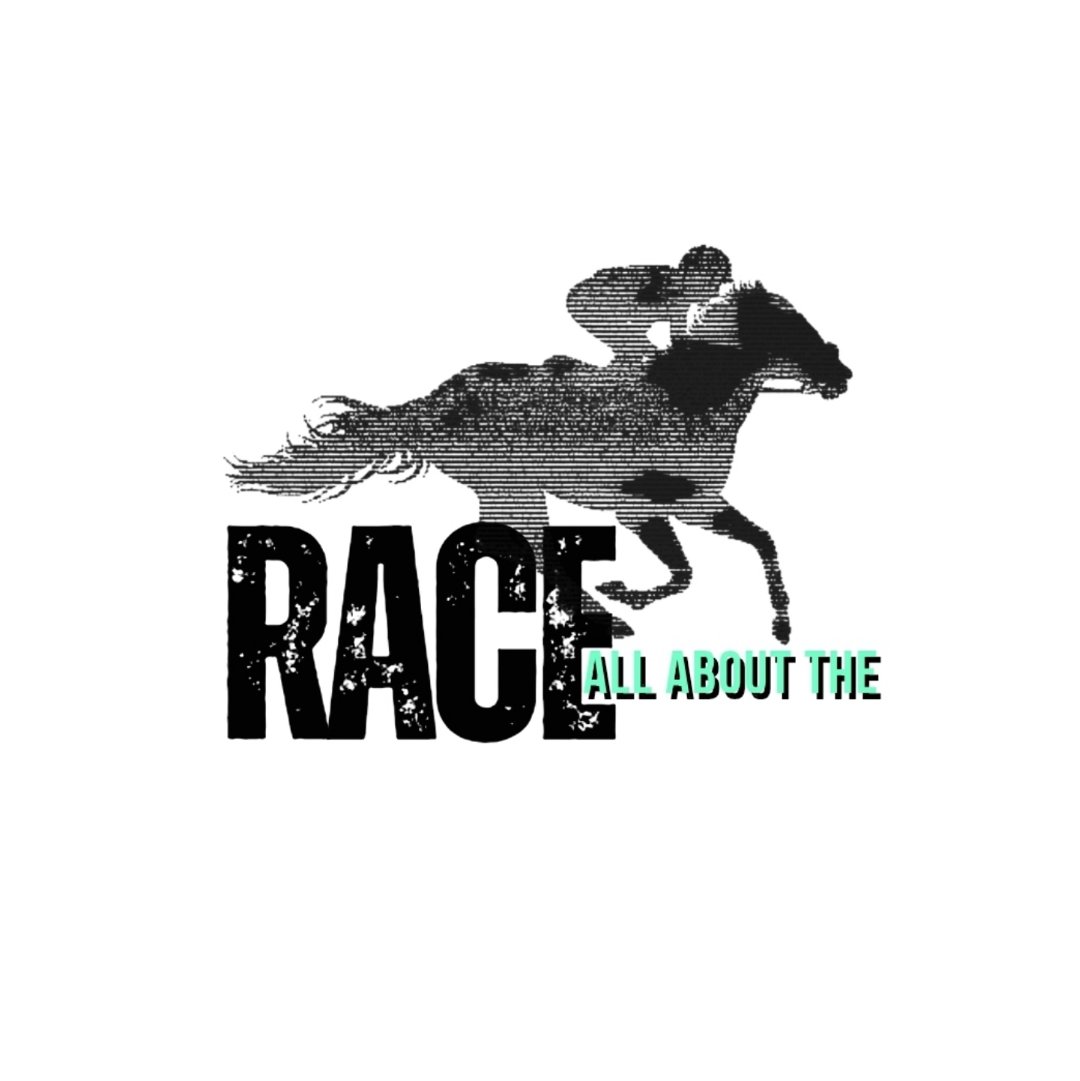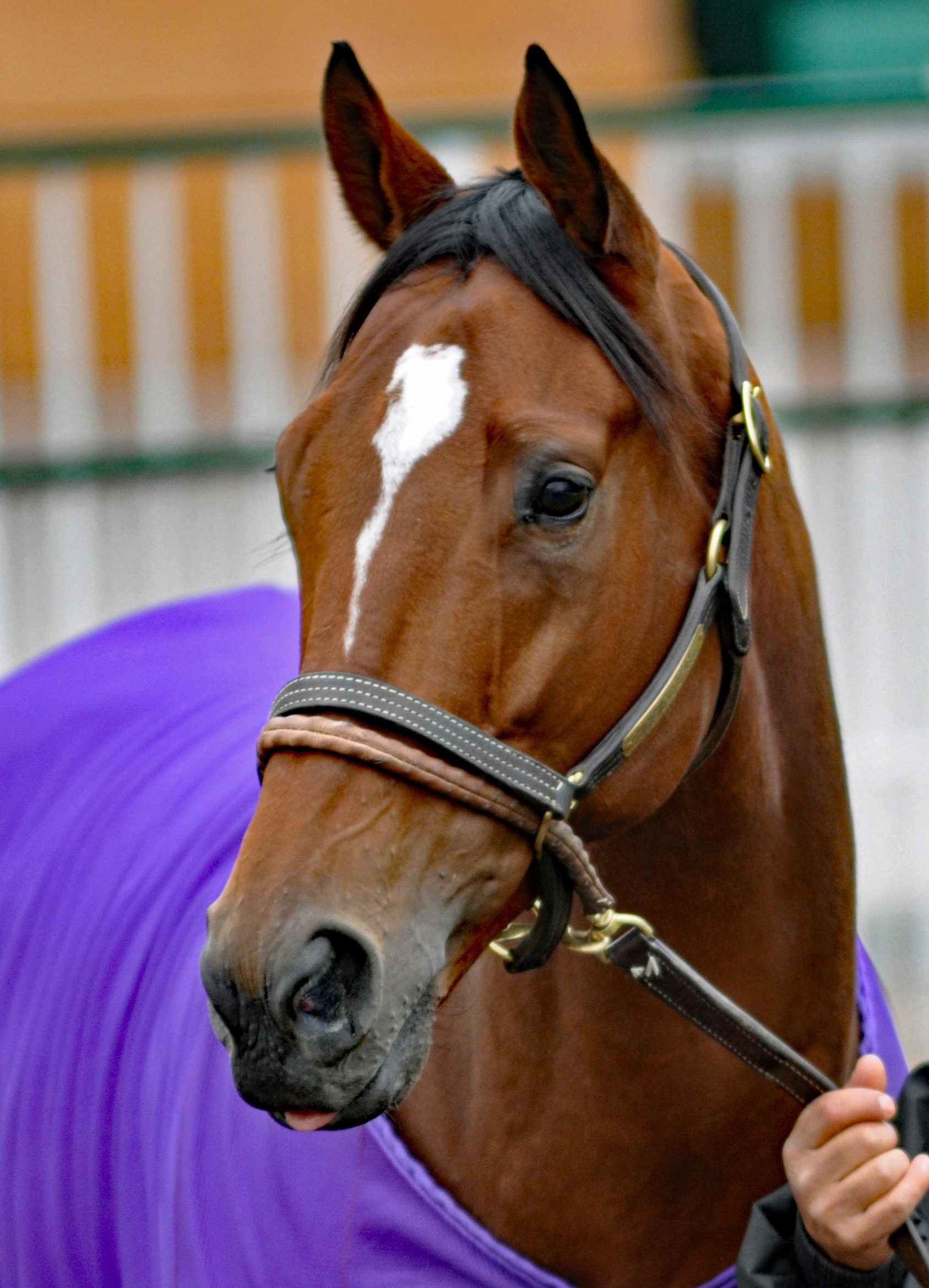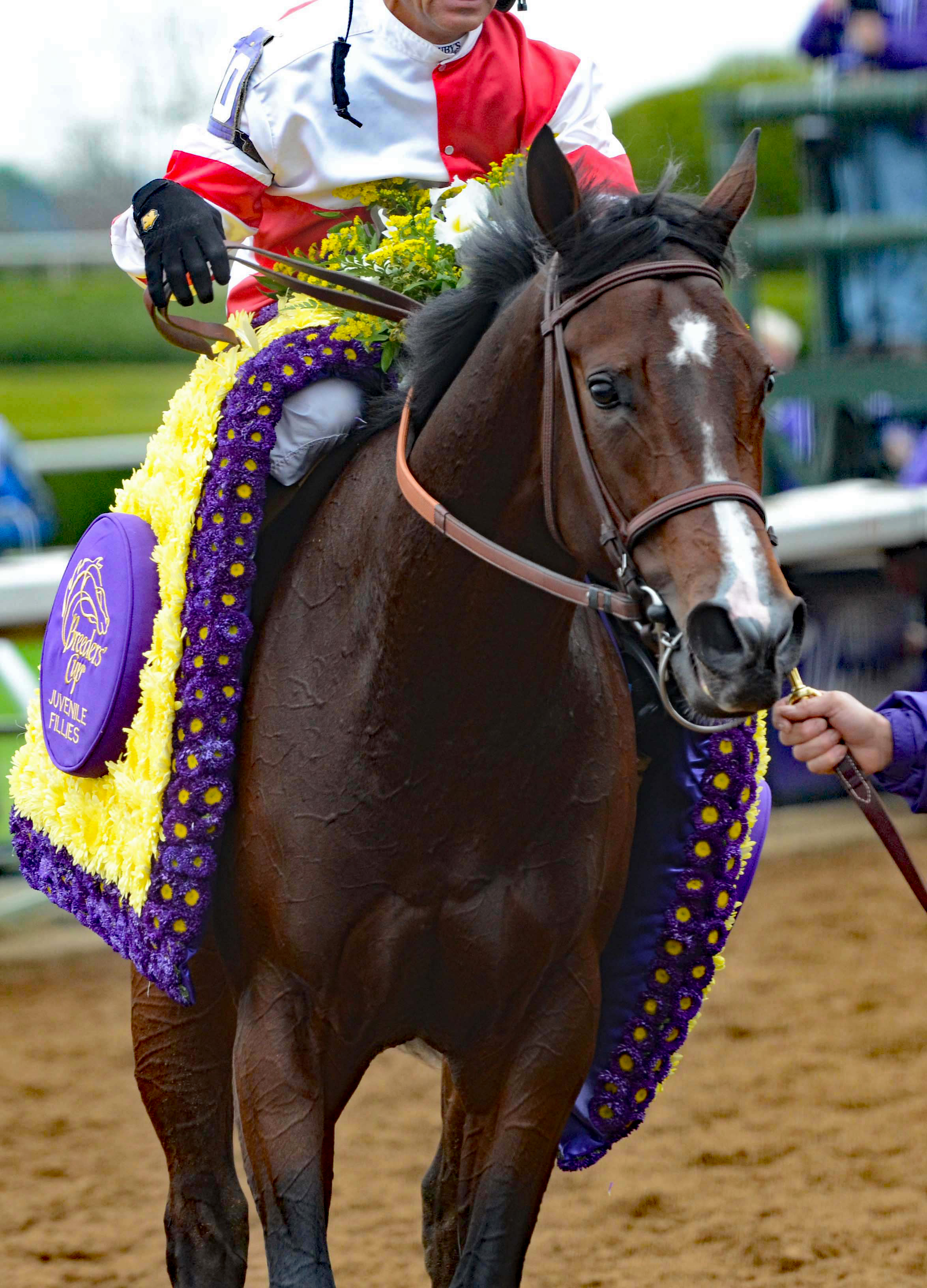Therapist for the Stars: Horse Racing’s “Laser Man” Brings Out the Best in Champions
Songbird. Shared Belief. Blind Luck. Unique Bella.
All Champions. All future Hall of Famers. All ran for leading Hall of Fame trainer Jerry Hollendorfer.
From 2009 to 2018, the horse racing world cheered four horses who won a combined 44 races across 61 starts, had total earnings of $12,176,120 and six Eclipse Awards. What is rarely seen, however, are the countless hours of work and preparation that contribute to the success of a racehorse by grooms, farriers, veterinarians, and other vital members of a racing operation. For the four aforementioned champions, a relatively unknown, yet, indispensable member of that team was a man recognized in the racing industry as “Laser Man.”
Bourmas (left) schools Shared Belief for the 2014 Breeders’ Cup Classic (G1) at Santa Anita Park with groom Armando Rodriguez.
Photo by Tom Ferry.
When Steve “Laser Man” Bourmas vacationed as a child in Greece, his parents gave him money to buy anything he wanted at a local bazaar. While mom and dad probably envisioned the purchase of candy or a favorite toy, imagine their surprise when the nine-year-old returned with a baby donkey. It was an early preview to a life dedicated to a love of animals and the passion he has refined over the years for equine therapy.
During his high school years, Bourmas’ career goals included dreams of playing professional baseball. He played college ball at an Illinois college and the Montreal Expos’ minor league organization. But his studies were in Sports Medicine, and after graduation he secured a medical practice in a Chicago suburb as a therapist working on professional athletes in the National Football League and the National Basketball Association. His love for animals, specifically horses, never left him.
“He [Shared Belief] was the most incredible horse I’ve ever known.”
“I studied at the Cortiva Institute, which is a very good therapeutic school.” says Bourmas, “Once I understood the body and how it works, I was able to transfer that knowledge over to the horse, and if you really love what you do, you’ll make it work.”
The long-title for Bourmas’ occupation is Photobiomodulation Therapist, the technical term for laser therapist. It involves light therapy using lasers to improve tissue repair, and reduce pain and inflammation wherever the beam is applied.
Photobiomodulation has been used for many years on sports injuries, arthritic joints, back and neck pain. But when Bourmas began his practice, few - if any - were applying this therapy to horses.
Bourmas applies treatment to five-year-old mare Saint Alexius.
Photo by Tom Ferry.
“It took a long time to develop the protocols because they didn’t exist,” recalls Bourmas. “You couldn’t go out and get trained to be a laser therapist on horses, and even sports medicine had its doubters at the beginning. Back then, if your horse was sore, people would say the horse needs to be turned out.”
So, he taught himself and learned on the job. He approached trainers and offered his services for free by working on some of their lowest-level horses. He discovered what worked and what did not. He also learned how difficult it is to break into the horse racing industry on your own and the necessity of paying one’s dues.
“I didn’t feel comfortable taking someone’s money if I didn’t trust the methods myself. Everything I’ve done is anchored in experience and results, beginning at the bottom.”
Bourmas stretches Saint Alexius.
Photo by Tom Ferry.
As his career progressed, Steve Bourmas was introduced to successful horse owner and breeder John Carver. Carver needed some therapy for an upcoming local golf tournament he was participating in and told Bourmas if he could help Carver to a point where he could do well at the outing, Carver would come back with a proposition. Carver won the tournament and, good to his word, returned to Bourmas with a question.
“He asked me what I liked working on better, horses or humans,” recalls Bourmas. “I told him I liked horses far better than humans and he said, ‘Then you can treat all of mine.’ I asked him, ‘Who do you have?’ and he said, ‘I have Blind Luck, I have Dakota Phone, I have horses in California, New Jersey, Canada, and I have both Thoroughbreds and Standardbreds.’ He let me work on his horses and I became a jet-setter and traveled all over the country.”
“Results are everything in this business and if you don’t get them, it doesn’t really matter what you do.”
Bourmas uses the most cutting-edge technology in laser therapy on horses and humans.
Photo by Tom Ferry.
The relationship with John Carver’s horses opened a door in 2009 for Bourmas with Hall of Fame trainer Jerry Hollendorfer, who co-owned champion Blind Luck with Carver, Peter Abruzzo and Mark Dedomenico. Bourmas would eventually work with Hollendorfer’s entire stable, some 33 horses. He would put in 12-15 -hour days each day.
His methods progressed beyond laser therapy to include a comprehensive platform called Equine Muscle Maintenance. He developed techniques that exceeded typical treatments for hocks, knees, back and joints to include protocols for rehabilitation, pre-performance conditioning, maintenance, and post-performance therapy, each designed to get results and protect the racehorse.
Were there skeptics of his practice? Certainly.
The state veterinarians at Hollywood Park raided his barn after people complained of a guy doing some “funny stuff” with horses. But skepticism can begin to fade once a barn starts winning and achieving consistent results.
And did the results ever come.
In addition to numerous graded stakes triumphs, Bourmas’ work with a five-year-old Dakota Phone led to a 37-1 upset triumph in the 2010 Breeders’ Cup Dirt Mile (G1). In the world of harness racing, his treatments of then two-year-old trotter, Manofmanymissions, contributed to a world record-breaking performance and a championship victory in the 2010 Breeders Crown. In addition to Jerry Hollendorfer, Bourmas also treated horses along the way for the stables of Hall of Fame trainers Ron McAnally and the late Jack Van Berg. Van Berg once said of Bourmas, “That kid comes in and within 20 minutes your horse is a completely different horse.”
Today at age 48, Steve Bourmas has built up quite a collection of experiences with memorable horses he has treated. Perhaps no horse has captured a larger portion of his heart than the late Shared Belief. America’s Champion Two-Year-Old Male of 2013 broke hearts around the world when he died at age four in December of 2015 due to complications of colic.
“He was the most incredible horse I’ve ever known,” says Bourmas. “He was so smart and so tough. I’d work on him in his stall, and when he started to feel good, he would swell up like King Kong and would get cocky and would try to kill you if you weren’t careful. He was so smart that he figured out the red button on my laser machine controlled the power and he would make a bee-line for the button with his face to shut it off to stop it from humming. You had to play his game in a controlled way. If you brought him to the paddock to school, he thought it was time to race, and when he learned he wasn’t going to the track, he would go crazy. We were careful to never extinguish his fire, but, rather, contain it.”
Shared Belief was injured during a fourth-place finish in the 2014 Breeders’ Cup Classic (G1). Steve Bourmas found a horse in his stall who couldn’t barely walk without a hitch, couldn’t switch leads, and could not gallop.
“When I saw Shared Belief in his stall, his head was down and I thought, ‘What happened to him?’. Nobody knew the horse better than me and Armando [Rodriguez], his groom. Armando knew him because he was with him every day, and I knew him because I knew every inch of his body. I don’t see a horse as an animal. I talk to them like a person. I started putting everything back together - his spine, his legs, his shoulders. I could tell [as he got better] because he started biting me again. And, shortly afterwards, he won the Malibu Stakes (G1).”
Blind Luck was a multiple graded-stakes winner and Champion Three-Year-Old Filly of 2010. Her competitiveness was on full display during her treatment sessions.
“She was one of the meanest horses I’ve ever been around,” says Bourmas. “If she got mad at you, she would pin you inside the stall. She’d pin her ears back and suck on her lip. She bit me so hard before the Breeders’ Cup Distaff (G1) at Churchill Downs that she made me bleed from a chest wound through three layers of clothes.”
Similar to Blind Luck in demeanor was multiple Eclipse Award winner Unique Bella.
“She was a very temperamental horse. There were times when she would let you go in her stall and work on her, and there were other times when she would see someone coming and didn’t want anybody to be around her,” recalls Bourmas. “The horses knew who I was and some wanted the therapy all the time. And if I was working on another horse, they would often get jealous and start kicking walls.”
One of Bourmas’ most rewarding experiences was with the great filly Songbird.
“When people see the finished product on the track, they often don’t understand the work it takes to get a horse like Songbird to that level. It took me 26 visits with her in a stall every month. Laser therapy, hands and manual therapy, stretching, and legwork. Just constant work to keep her loose. Every time she went to the track, whether she was galloping, jogging or working, she gave you 110 percent.”
The Bourmas family, left to right: Emma, Jennifer, Steve and Dimitri.
Photo by Timothy Kinsey, Jr.









